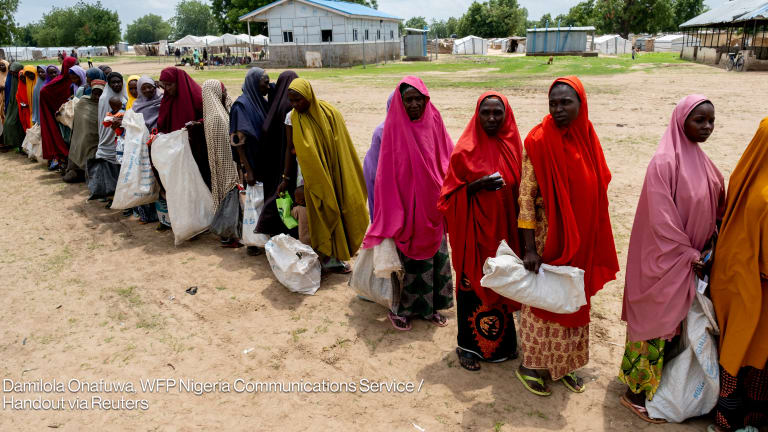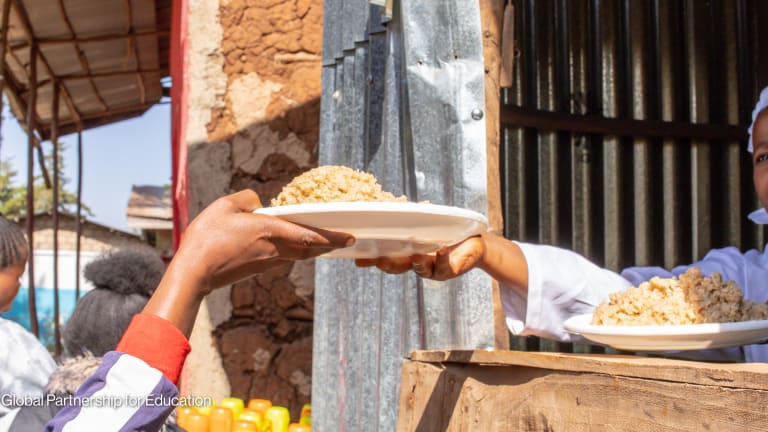
A new database is collecting research on post-harvest food loss and waste to help inform policymakers and academic researchers as they seek to reduce the estimated one-third of food that is grown but not consumed.
Get the inside track on how agriculture, nutrition, sustainability, and more are intersecting to remake the global food system in this weekly newsletter.
The Post-Harvest Loss Information System, known by the Portuguese abbreviation SIPPOC, was developed at the University of São Paulo. It was created as a part of the Consortium for Innovation in Post-Harvest Loss and Food Waste Reduction, funded by The Rockefeller Foundation and the Foundation for Food & Agriculture Research. The three-year project aims to allow researchers from different countries to learn from one another about successful steps taken to fight food waste and loss.
The database, which launched in November, currently contains more than 200 papers with information from more than 80 countries and 22 crops. Users can download the papers and data to understand the current state of the problem in a specific place, as well as to compare areas of the world that might learn from one another.
“One of the conversations that we’ve had is: How do we access … the papers, the conference publications, the journal articles, and so forth that talk about post-harvest loss-related aspects across the various crops and across various countries and regions in the world?” said Dirk Maier, a professor at Iowa State University who leads the consortium.
“This was a way for [the database creators], using their search engine and programming capabilities, to make that happen and bring things together into a big database, and to make that database searchable so that you can very easily access the data that people have published.”
The Food and Agriculture Organization estimates that around 14% of food is lost between harvest and arriving for sale, while 17% is wasted at the household, food service, and retail levels. This means that all the resources that went into its production are also wasted by producing food that no one will eat. In addition, the food system produces up to 37% of all global greenhouse gas emissions.
Tracking the loss of food can be extremely difficult, and much of the public information that exists, such as in FAO reports, relies on government data, Maier said. The new database provides an additional source for helping researchers develop a better picture of how much of a particular crop might be lost in a country and where such losses occur in the supply chain.
Fernando Vinícius da Rocha, an agroindustrial supply chain management professor who co-developed the database at the University of São Paulo, said that existing papers look at all aspects of the supply chain, including transportation, logistics, and the availability of cold chain capacity. Some of the information is even plotted on a map using geographic information services so users can visualize supply chain losses for a particular crop.
UN report: Countries at all income levels waste food
The United Nations Environment Programme's "Food Waste Index Report 2021" found that as much as 17% of total global food production is never consumed, contributing to climate change.
The database is not able to pull new material automatically from the internet because additional work is required to ensure the information being added is searchable. The creators plan to update the database with new research every quarter and encourage new submissions of papers that can be included, according to da Rocha. He said the main challenge is making and maintaining contact with other institutions that are doing research on post-harvest loss.
“The Consortium for Innovation [in] Post-Harvest Loss is trying to do this work of making institutions from different countries working together and talking every two months — meeting and discussing new innovations, discussing new products,” da Rocha said. “The consortium is helping with this challenge.”
The database currently requires users to register for access, which da Rocha said was intended to enable networking among those interested in the issue of food loss and waste. But the creators are now considering making it available without registration to increase the number of users, he said.
The database allows users to select the types of research they want to include in an analysis, so they can exclude data that may not be relevant for their purposes. Da Rocha said he hopes researchers can use the database to take research to the next step and examine why differences exist across the world in terms of food loss and waste.
“What is the take-home?” da Rocha said. “What is the next step of research that can use SIPPOC as a source of information?”







